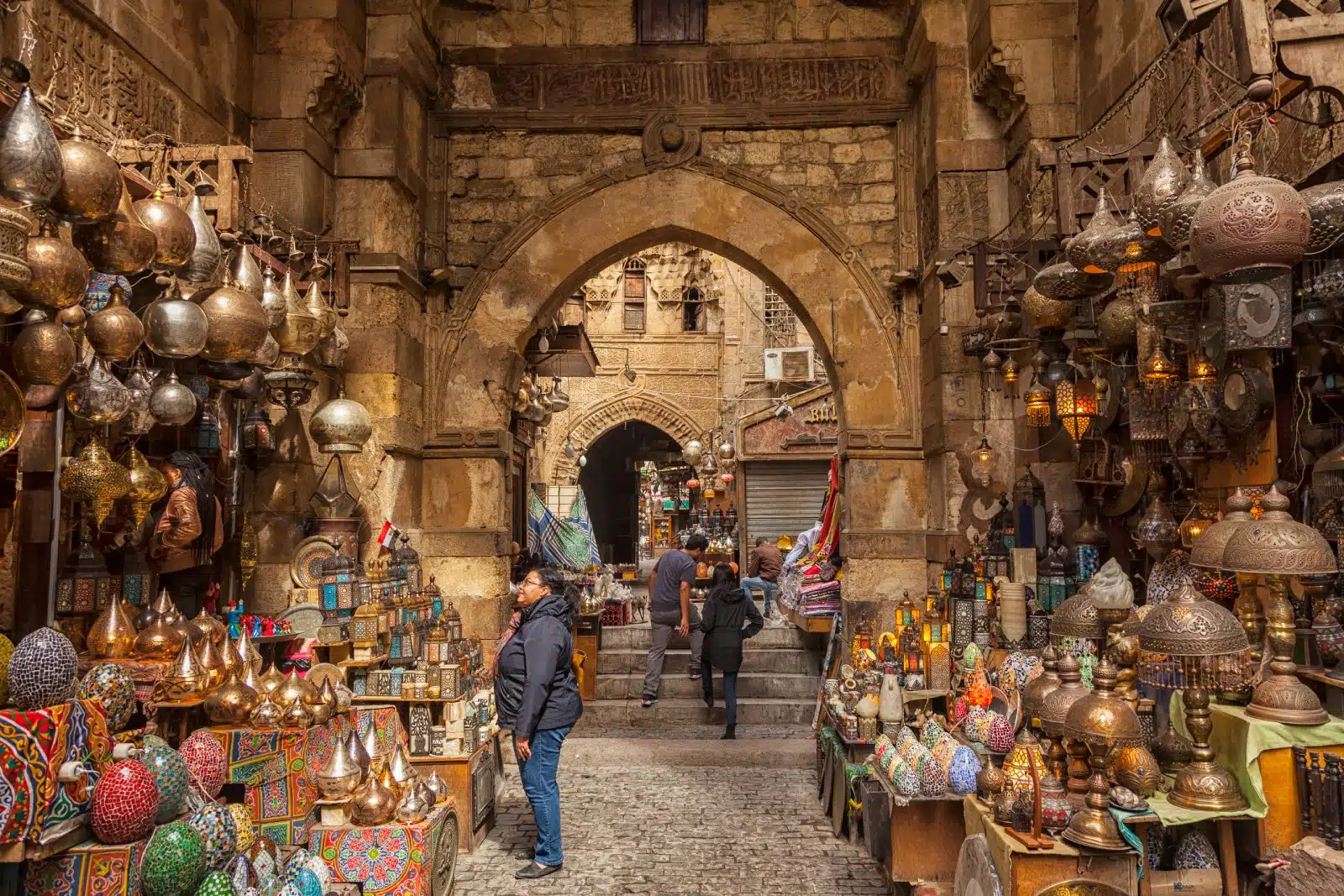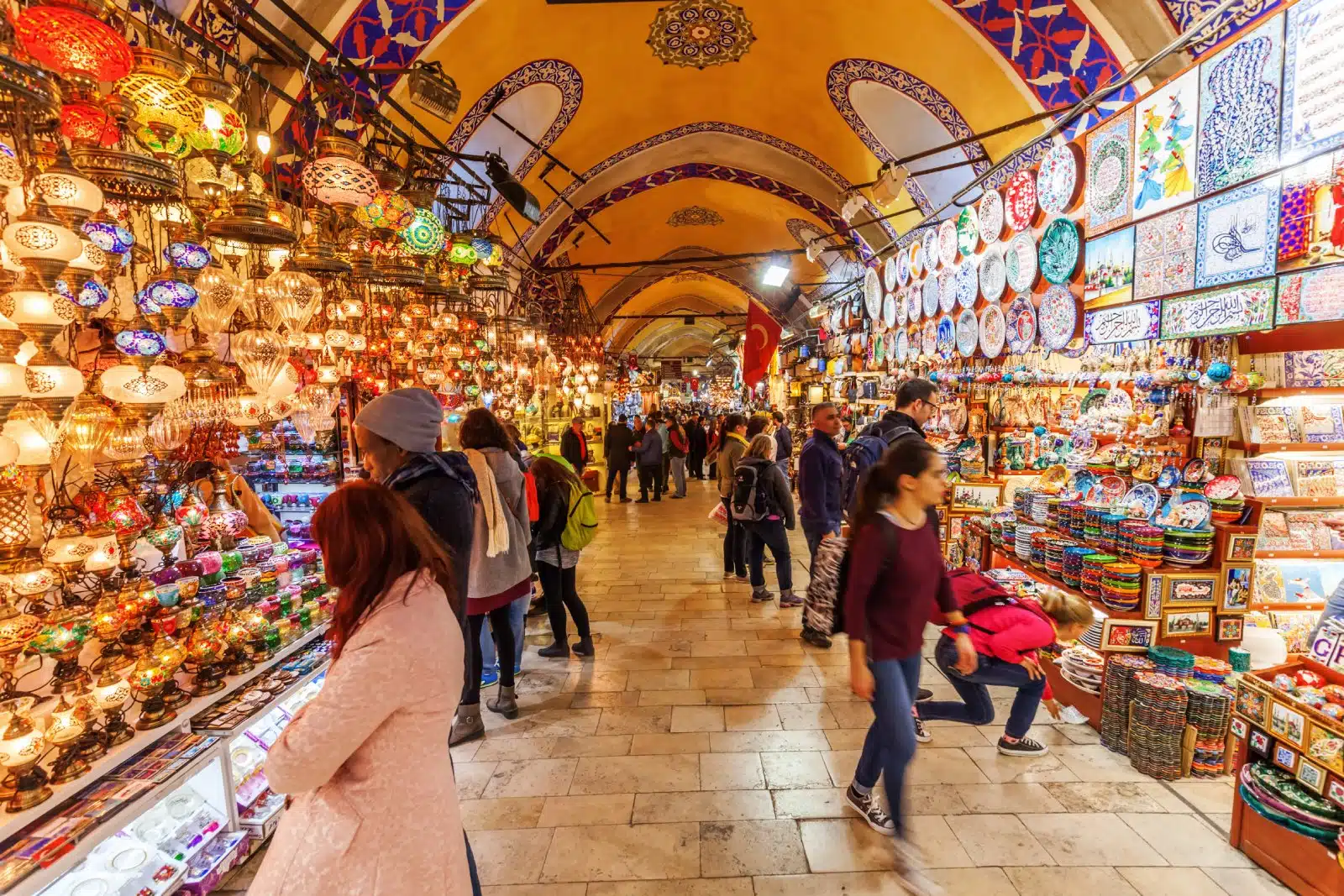Navigating the vibrant hustle and bustle of local markets is an integral part of the travel experience, offering an insight into a destination’s culture and daily life. Mastering the art of bargaining in these markets is not just about securing the best deals; it’s a dance of negotiation that, when done correctly, respects local customs and enriches your travel experience. This guide provides comprehensive insights into the nuanced skill of bargaining, ensuring you can engage confidently and effectively in local markets worldwide.
1. Understanding Local Market Dynamics

Image Credit: Shutterstock / cdrin
Before bargaining, it’s crucial to understand the dynamics of the local market you’re visiting. Markets vary greatly from one country to another, influenced by local customs, economic conditions, and the nature of the goods being sold. Some markets may have fixed prices with little room for negotiation, while others expect and welcome haggling. Researching the market beforehand can provide valuable insights into what to expect and how to prepare. Observing local interactions can also offer clues on acceptable bargaining practices and starting price points.
Insider’s Tip: Spend time walking around the market to observe the general price range for items you’re interested in. This initial reconnaissance can give you a solid foundation for starting negotiations.
2. Learning Basic Phrases in the Local Language

Image Credit: Shutterstock / Adisa
Communicating in the local language, even at a basic level, can significantly enhance your bargaining power. Learning key phrases such as “How much?” “Too expensive” and “Do you have anything cheaper?” can facilitate smoother transactions and demonstrate respect for the local culture. Sellers are often more receptive to negotiating with travelers who try to speak their language, potentially leading to better deals and a more positive overall interaction.
Insider’s Tip: Learn basic bargaining phrases using a language app or phrasebook. Practice pronunciation to ensure you’re understood, and don’t be afraid to use gestures as a universal form of communication.
3. Showing Respect and Understanding of Cultural Nuances

Image Credit: Shutterstock / Serenity-H
Bargaining is deeply rooted in the culture and traditions of many countries, where it’s seen as much as a social interaction as a business transaction. Showing respect and understanding cultural nuances is paramount. This means being polite, maintaining a friendly demeanor, and not taking the negotiation too seriously. In some cultures, a bargaining approach that is too aggressive can be seen as disrespectful. It’s important to strike a balance between being firm in your negotiations and showing respect for the seller and their livelihood.
Insider’s Tip: Always start negotiations with a smile and a polite greeting. If a price cannot be agreed upon, thank the seller and move on gracefully.
4. Starting Low and Bargaining Up

Image Credit: Shutterstock / elwynn
A common tactic in bargaining is to start with a lower offer than you’re willing to pay, then gradually increase your offer until a mutually acceptable price is reached. This approach gives you room to negotiate and find a middle ground. However, making realistic offers is important; starting too low can insult the seller and shut down negotiations before they begin. A good rule of thumb is to start at about 30-50% of the asking price, depending on the local bargaining culture.
Insider’s Tip: Observe how locals negotiate and try to mimic their approach. This can give you a better sense of what starting offer is reasonable in that market.
5. Being Prepared to Walk Away

Image Credit: Shutterstock / Merydolla
One of the most powerful tools in bargaining is being willing to walk away. If negotiations reach a stalemate or the price remains higher than what you’re willing to pay, politely decline and start to leave. Often, this action can prompt the seller to offer a final, lower price. It’s important to use this tactic respectfully and not as a bluff; if you’re genuinely not interested in the given price, walking away is a fair and effective strategy.
Insider’s Tip: If you’re truly interested in an item but can’t reach an agreement, take a walk around the market and return later. The seller might be more willing to negotiate when you come back.
6. Buying in Bulk for Better Deals

Image Credit: Shutterstock / David Bokuchava
Purchasing multiple items from the same vendor can often lead to better deals. Sellers are usually more willing to lower the price per item if you buy in bulk, as it means a larger sale for them. If you’re shopping with friends or family, consider combining your purchases to take advantage of bulk pricing. This approach can be particularly effective for items like souvenirs, clothing, and handicrafts.
Insider’s Tip: Clearly express your interest in multiple items and ask for a combined price. This signals to the seller that you’re serious about making a larger purchase, opening the door for deeper discounts.
7. Recognizing When to Seal the Deal

Image Credit: Shutterstock / elwynn
Successful bargaining involves recognizing when you’ve reached a fair price and sealing the deal. Holding out for an excessively low price can sour the interaction and waste your and the seller’s time. If the seller has come down significantly from their initial price and you’ve reached a point that feels fair for the quality and nature of the item, it’s a good practice to agree on the sale. This concludes the transaction positively and respects the effort and craftsmanship behind the item.
Insider’s Tip: If you’re happy with the price and the respectful negotiation process, show your appreciation by concluding the deal with a smile and a thank you.
8. Avoiding Common Pitfalls

Image Credit: Shutterstock / Christian Mueller
Bargaining in local markets has its share of pitfalls for the unwary traveler. Common mistakes include being overly aggressive in negotiations, not comparing prices between different stalls, and showing too much interest in an item, which can reduce your bargaining leverage. Additionally, being unaware of the local currency’s value can lead to overpaying. Familiarize yourself with the currency and clearly understand how much you’re willing to spend on certain items to avoid these pitfalls.
Insider’s Tip: Keep a conversion chart handy on your phone or a piece of paper to quickly calculate prices in your home currency. This can help you make informed decisions about the value of an item.
9. Respecting the Final Price

Image Credit: Shutterstock / BearFotos
Once a price has been agreed upon, it’s essential to respect the final price and conclude the transaction. Attempting to renegotiate after agreeing on a price is considered bad form and can be disrespectful to the seller. Pay the agreed amount, thank the seller for their time, and enjoy your purchase knowing you’ve engaged in a fair and respectful negotiation process.
Insider’s Tip: Always carry small denominations of currency to make transactions smoother and to avoid issues with change.
10. Learning From Each Experience

Image Credit: Shutterstock / TEERASAK KHUNRACH
Every bargaining interaction is an opportunity to learn and improve your negotiation skills. Reflect on what strategies worked well and what could be improved next time. Over time, you’ll develop a keen sense of bargaining that will serve you well in markets around the world. Remember, the goal of bargaining is not just to get the lowest price, but to engage in a cultural exchange that enriches your travel experience.
Insider’s Tip: Keep a journal of your bargaining experiences, noting what tactics were effective and how different cultures approach negotiation. This can be a valuable resource for future travels.
The Bottom Line

Image Credit: Shutterstock / Tupungato
Mastering the art of bargaining in local markets is a valuable skill that enhances your travel experience, allowing you to engage more deeply with local cultures and traditions. By approaching negotiations with respect, patience, and a willingness to learn, you can secure great deals and meaningful interactions that enrich your understanding of the world. Remember, the essence of bargaining is found in the mutual respect and enjoyment of the negotiation process itself. With these insights and tips, you’re well-equipped to navigate the lively world of local markets with confidence and grace.
More From The Green Voyage
Top 10 Trending Travel Destinations 2024
6 Essential Banking Apps for International Travel – Managing Your Finances on the Go
Traveling With Kids – 10 Tips to Create Memorable Family Holidays
The post Learn How to Bargain in Local Markets 2024 first appeared on The Green Voyage.
Featured Image Credit: Shutterstock / Marcos Castillo.
For transparency, this content was partly developed with AI assistance and carefully curated by an experienced editor to be informative and ensure accuracy.
